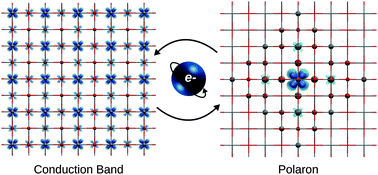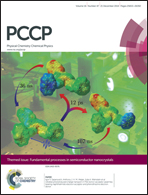The nature of excess electrons in anatase and rutile from hybrid DFT and RPA†
Abstract
The behavior of excess electrons in undoped and defect free bulk anatase and rutile TiO2 has been investigated by state-of-the-art electronic structure methods including hybrid density functional theory (DFT) and the random phase approximation (RPA). Consistent with experiment, charge trapping and polaron formation is observed in both anatase and rutile. The difference in the anisotropic shape of the polarons is characterized, confirming for anatase the large polaron picture. For anatase, where polaron formation energies are small, charge trapping is observed also with standard hybrid functionals, provided the simulation cell is sufficiently large (864 atoms) to accommodate the lattice relaxation. Even though hybrid orbitals are required as a starting point for RPA in this system, the obtained polaron formation energies are relatively insensitive to the amount of Hartree–Fock exchange employed. The difference in trapping energy between rutile and anatase can be obtained accurately with both hybrid functionals and RPA. Computed activation energies for polaron hopping and delocalization clearly show that anatase and rutile might have different charge transport mechanisms. In rutile, only hopping is likely, whereas in anatase hopping and delocalization are competing. Delocalization will result in conduction-band-like and thus enhanced transport. Anisotropic conduction, in agreement with experimental data, is observed, and results from the tendency to delocalize in the [001] direction in rutile and the (001) plane in anatase. For future work, our calculations serve as a benchmark and suggest RPA on top on hybrid orbitals (PBE0 with 30% Hartree–Fock exchange), as a suitable method to study the rich chemistry and physics of TiO2.


 Please wait while we load your content...
Please wait while we load your content...